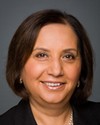Did I?
When I look at this, of course the answer, as Mr. Dykstra says, is to make sure that each party has the percentage of time that is proportional to their seats in the House of Commons. That's how we did it in the last Parliament. Whether it was minority or majority, that's what we did.
If you take the first two rounds.... I understand that last time this committee used a lot of one-hour meetings. They would split the two hours into two one-hour meetings, which I understand is an efficient and economic way to go, and it is probably something we'll do fairly regularly. If you take just that one scenario, we will get through the first two rounds of questioning.
The way the motion is drafted, if we have two witnesses, they get 10 minutes each. That means 20 minutes will be done, and that leaves 40 minutes for questioning. Of that 40 minutes, if the Liberal Party gets five minutes, then that gives them 12.5%. Their percentage in the House of Commons is 11%. If they were to get seven minutes in the first round, as Mr. Lamoureux suggests, they would get 17.5% of the time, which is vastly disproportionate to their seats in the House of Commons.
The other scenario in the motion is that if we were to have three witnesses the proposal is to have eight minutes apiece. That means there would be 24 minutes of evidence and 36 minutes left for questioning. Under the 36 minutes, if Mr. Lamoureux and the Liberals get five minutes, that's 13% of the time, which is still above their proportion in the House of Commons. Were they to get seven minutes in the first round, as Mr. Lamoureux suggests, that would give them 19% of the time.
In my opinion, the questioning order is appropriate. It's fair, and it's actually overly generous to the Liberal Party in terms of the amount of time that's allotted to them. Were you to put the Liberal Party in the first round and give them seven minutes, it would be unfair to the other parties in this room.







